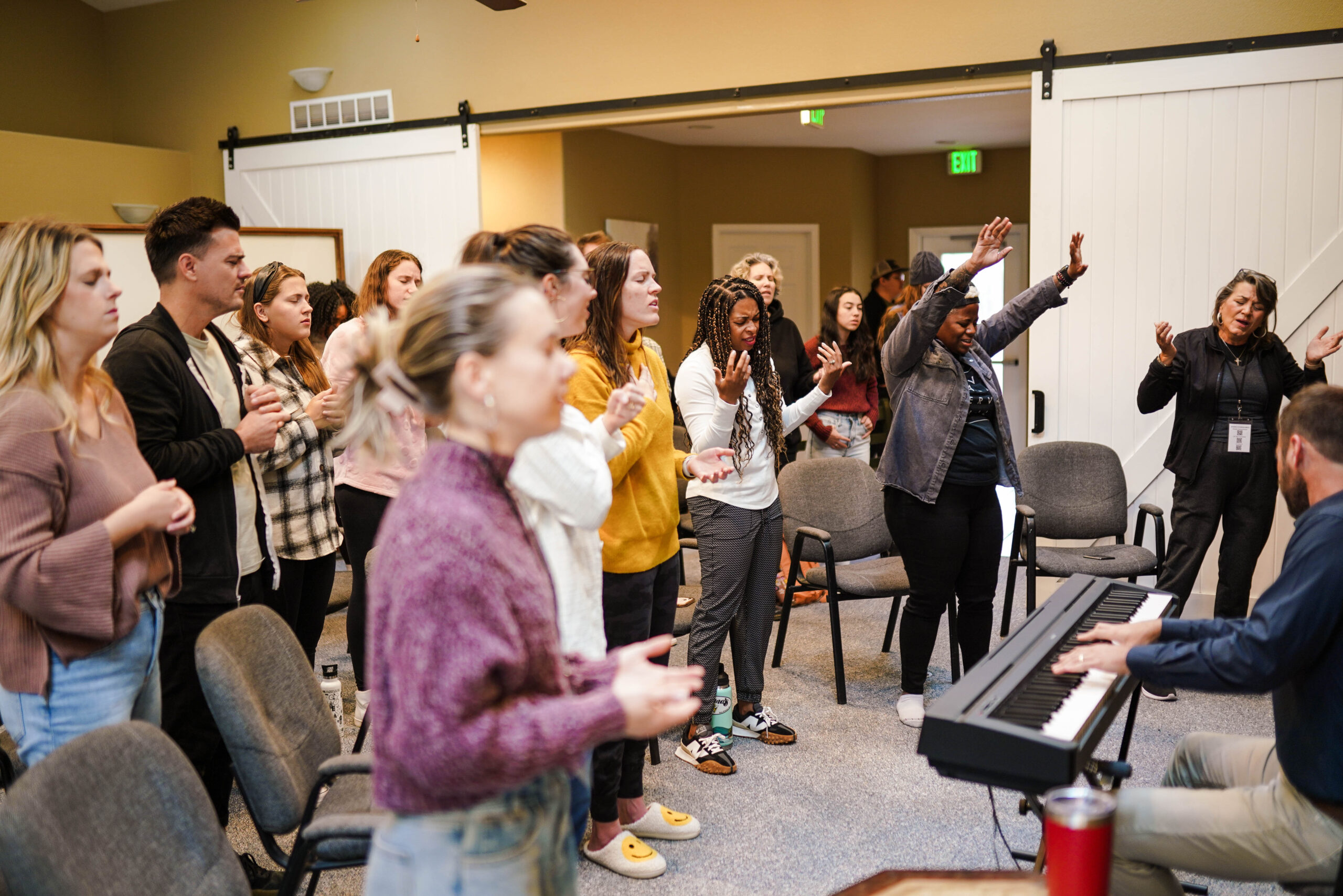The last post discussed how you can better prepare yourself to facilitate spontaneous moments in worship. But leading a team in spontaneity is a whole different animal that requires a different set of skills and practices.
So, what do you do if you feel comfortable leading spontaneous moments, but it’s foreign to your team? Here’s how I would begin:
Cast a vision for “why”
Over the years I’ve heard dozens of worship leaders share their struggles with getting team members to “learn the Nashville number system” or put energy into “memorizing their charts.” When I ask them how they’ve pitched it to their teams, without fail, they give me a blank stare. Usually followed by something like, “Well, we talked about wanting to grow in our musicianship and this is a good step toward that.” That’s not wrong, it’s just not compelling.
“Spontaneous worship” isn’t just a cool fad – and if it is to you you probably shouldn’t do it. It’s the natural form of engagement between a living God and a living congregation. Not everything can – or should – be spontaneous. But if we believe that God is active among His people gathered for worship, then we should expect it to be dynamic and that will inevitably lead to moments of unpredictable response on our part and on His.
And this is what your people need to hear.
Sometimes the flow of the liturgy is adequate for our response to God and His response to us, but sometimes we need a little something more – and that’s what we call “spontaneous worship.” If you want your team to be on board and willing to adopt a difficult somewhat risky new paradigm for corporate worship, then cast a compelling vision.
Communicate a plan
And each of those personnel have specific adjustments that going off script will require. If you just “do it” and it takes them by surprise – especially if it doesn’t go well – they’ll be hesitant to want to go there with you in the future.
Doing it well requires forethought and communication with teams at large as well as with particular individuals. For me this looks like identifying beforehand the places in the set that might have a moment of invitation to linger or go off script.
Once again, true spontaneity isn’t really predictable, but we’re not after “spontaneity,” we’re after dynamic engagement with God. And oftentimes if you pay attention and sit in the set long enough while planning you’ll get a clue or direction as to what might happen.
For me this would often look like bringing options to the table at rehearsal. I might say, “At the end of this song we’ll probably take our time and linger and if I sense a building praise-type response we might do this, but if it’s more of a receiving moment I’ll just lead this.” It’s simple communication, and when the moment comes you may do neither, but at least your team feels like they’re being brought along for the journey rather than being left in the dark while you lead like a maverick. Attempting to equip them and communicate with them as much as possible gives the best chance of them responding well and contributing in those moments.
Practice unpredictability
But as important as casting a vision and communicating a plan are, you still have to enculturate your team by actually practicing for these moments. One way I would get the team used to playing in unpredictable moments was that I’d open rehearsal with a song from the set and at the end we’d just flow for three to five minutes with no explicit direction other than “we’ll stay on the chorus and see where we go from there.”
The first few times people were nervous and either didn’t know what to do or overplayed in fear of extra space, but rather quickly the team naturally fell into a rhythm of paying attention to one another. They’d quit frantically wondering “WHERE ARE WE GOING?” and they would engage in dynamic participation with one another. It forced them to watch, listen, and pay attention to the moment.
So I built a ten minute exercise into the sound check portion of our rehearsal that got people to engage with one another dynamically right in the beginning. This is not the only way to do it, but you need to find some way for your team to play without an explicit script coming from a chart or a guide.
Over time I found that the team would look forward to those moments. Sometimes we’d become a jam band and other times we’d find ourselves deep in worship before rehearsal had really even begun. My goal was for the team to get comfortable with unpredictability, which happened. What I had not anticipated were the byproducts of creativity, joy, and buy-in that accompanied. Many times we would find a direction as a team rather than me telling them what I thought we should do.
These things take time, but in the end will prove to have been worth the wait.
10KFAM exists to raise and release spiritual mothers and fathers who creatively shape the future of the church. The primary way we do this is through our Worship School, an 18-month discipleship program rich with community, coaching, and Master’s-accredited content (that doesn’t require any relocation!). Whether you’ve been leading worship for decades or are just starting out, we invite you to join the journey of learning to cultivate and give away what God’s placed in you. Click here learn more about the School.
next worship school begins October 20-24, 2025
